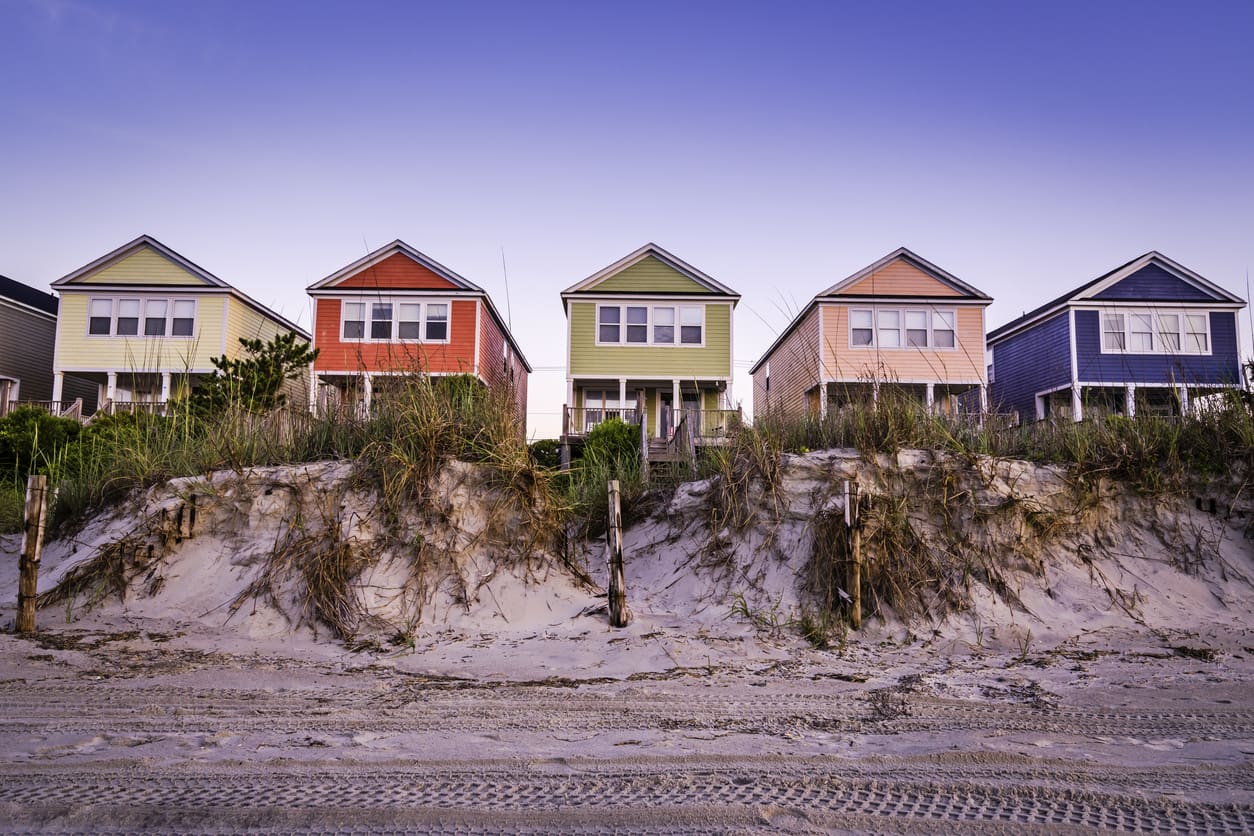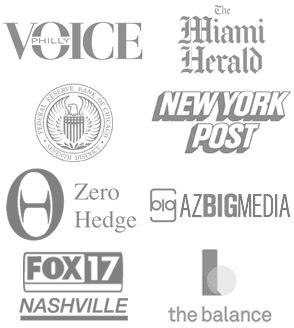Do you want to buy a second home? You probably have many questions about how to finance a another real estate property. Whether you want to buy a second home for vacations or as an investment property, getting financing for this type of property comes with some challenges that you should be aware of.
In 2026, with mortgage rates still hovering above around 6% for 30-year fixed loans and home prices averaging $420,000, buying a second home remains appealing amid remote work trends. However, second home loans differ from primary residence financing, often requiring higher down payments (10-25%), stronger credit scores (620-700+), and lower debt-to-income (DTI) ratios (under 45%). The RefiGuide published this article to educate borrowers on how to effectively get a second home loan with a competitive mortgage rate whether its owner occupied, vacation home or investment property.
How to Get a Home Loan for a Second Home with Competitive Mortgage Rates in 2026

Lenders view them as riskier, classifying them as non-primary, which excludes FHA or VA options for pure second homes. USDA loans may apply in rural areas, but conventional, DSCR, and Non-QM products dominate for flexibility.
To secure a loan, start with self-assessment: Boost your credit to 680+ for better rates, calculate affordability (second home payments plus primary shouldn’t exceed 36-43% DTI), and build reserves (6-12 months of payments).
Shop 2nd home lenders via tools comparing APRs and fees. Gather docs: W-2s, tax returns, bank statements, and proof of primary residency (e.g., utility bills). For investment intent, provide rental comps or appraisals. We will connect you with trusted 2nd home lenders so you can apply through banks, credit unions, or online lenders expecting 30-45 day closings. In high-cost areas, jumbo loans up to $1.2M apply. Below, three case studies illustrate paths using conventional Fannie Mae, Freddie Mac, FHA, VA, DSCR, and Non-QM loans.
Case Study 1: Conventional Fannie Mae Loan for 2nd Homes with Traditional Income Documentation
Emily, a 42-year-old accountant in Chicago earning $120,000 annually, sought a $400,000 lakefront second home in Wisconsin for family weekends. With a 720 credit score and 20% down ($80,000 from savings), she qualified for a Fannie Mae-backed conventional loan at 6.5% fixed rate. Fannie Mae requires the property be a one-unit home, borrower-exclusive (no rentals), and at least 10% down with DTI under 45%. Emily submitted two years of W-2s, tax returns, and pay stubs to verify income, plus reserves for six months’ payments.
She shopped three lenders, securing approval in 35 days via Chase Bank. Challenges included proving the home wasn’t an investment (no rental history) and a higher rate (0.25% premium over primary loans). Monthly payments: $2,200, fitting her 38% DTI. “Traditional docs made it straightforward—Fannie Mae’s guidelines ensured smooth underwriting,” Emily says. This case highlights conventional loans’ reliability for stable-income buyers, with limits up to $766,550 in most areas.
Case Study 2: DSCR Loan for a Second Home as an Investment Property
Marcus, a 50-year-old real estate investor in Florida with irregular income from flips, targeted a $300,000 Orlando condo as a short-term rental investment, treated as a second home with income potential. Opting for a DSCR loan, he qualified based on the property’s projected rent ($2,500/month) covering debt service (mortgage, taxes, insurance) at a 1.25 ratio—no personal income docs needed.
With a 660 credit score and 25% down ($75,000), Marcus used Griffin Funding for a 7.5% rate, 30-year term. Requirements: Property must be investment-only (no primary/second home occupancy), DSCR ≥1.0 (preferably 1.2+), and reserves for 3-6 months. He provided an appraisal with rent comps and a 1007 form estimating income. Closing took 40 days, with payments at $1,800—covered by $2,300 projected rent post-Airbnb setup.
Hurdles: Higher rates (1-2% over conventional) and fees (2-3 points), but no tax returns eased his self-employed status. “DSCR let me scale without income proof—perfect for investors,” Marcus notes. Ideal for cash-flow-positive properties, with loans up to $3M.
Case Study 3: Non-QM Loan for a Vacation Home with a Self-Employed Borrower Using Only Bank Statements
Sofia, a 35-year-old freelance graphic designer in California netting $90,000 annually via gigs, dreamed of a $450,000 Tahoe vacation home for seasonal escapes. As self-employed with variable income, traditional loans rejected her due to tax deductions minimizing reported earnings. She turned to a Non-QM bank statement loan, qualifying via 12 months of personal bank statements averaging $7,500/month deposits—no W-2s or tax returns required.
With a 640 credit score and 15% down ($67,500), Sofia secured a 7.8% rate through CrossCountry Mortgage, 30-year term. Non-QM requirements: 620+ credit, 10-20% down, DTI under 50%, and reserves for 3-6 months; vacation homes qualify if not primary. She submitted statements showing consistent deposits, plus an appraisal confirming the home’s value and zoning for personal use.
Process: 45 days to close, with payments at $2,800—affordable via her freelance cash flow. Challenges: Higher rates (1%+ premium) and fees (up to 3%), but flexibility bypassed tax hurdles. “Bank statements proved my real income—Non-QM opened doors shut by QM rules,” Sofia reflects. Suited for gig workers, with loans up to $3M and 90% LTV in some cases.
Navigating 2026’s 2ndHome Financing Market: Tips and Considerations
In 2026, expect stricter underwriting for second homes amid economic uncertainty—aim for 700+ credit and 20%+ down to snag rates under 7%. Consider occupancy: Pure vacations need proof of non-rental intent, while investments like DSCR allow income focus. For self-employed, Non-QM shines, but compare costs—DSCR/Non-QM rates hit 7-9% vs. conventional’s 6-7%. Use tools like Zillow for comps and consult advisors for personalized fits. With proper prep, a second home loan can unlock leisure or wealth-building in 2026’s resilient market
Finance & Buy a Second Home Loan Requirements
There is an easier way to buy a second home or investment property if you speak with the right mortgage lenders.
This article will explain how to finance a second home with an affordable mortgage loan in the booming real estate market. You will learn that not all mortgage companies or banks offer competitive loans for vacation homes and rental properties.
Buying a 2nd Home with a Government Loan

First, be aware that government-backed loans, such as FHA, are not available for second homes. FHA loans are designed to encourage home ownership by offering low down payments and easy qualifying criteria.
FHA programs only require 3.5% down and you can have a credit score as low as 580 but in some instances government lenders will want a more significant down-payment if it is for a second residence. In some cases and get approved, but it may depend on how close this 2nd home is to your primary residence.
If it is too close, most government underwriters will consider it a rental property and a larger down-payment will be required. 50 miles or more are typically the distance underwriters are expecting for vacation home consideration.
There are exceptions, but you would need to make a compelling case to be approved for a second home loan with a small down-payment. But FHA financing, as well as USDA and VA loans, are not available for second homes that you do not intend to live in as your primary residence.
It is possible to get a government backed mortgage in a second home if you are going to live in it full time; some landlords will buy a duplex and rent out one of the units while living in the other. Also, if you currently have an FHA loan on your first home, you may be able to get a new FHA loan on the second home and rent out the first…if you can prove you got a new job that forced you to move to where the second home is. Read more insight on investment property loans.
Buying a Second House with a Conventional Loan
Generally, you will need to get a conventional mortgage to finance a second home. One plus of conventional loans is that you do not have many restrictions on the type of home that you buy. You can get a single family, condo or a property with two to four units.
Conventional loans do require you to make a larger down payment. Generally, you will need to make at least a 10% down payment to get a conventional mortgage on a second home.
Next, you will need to show that you have enough income to get approved for a second home. You have to meet debt to income ratio guidelines to get approved for your second home mortgage. If you have a mortgage on your first home, this means you need to have sufficient income to pay for both mortgage payments without having a debt to income ratio that is higher than 41%.
To determine your DTI ratio, you take your monthly debt payments and divide them by your pretax income each month. You are not allowed to use projected rental income.
The next requirement is to have a credit score of at least 620 to qualify for a conventional mortgage on your second home. The higher your credit score, the better your rate will be. Before you apply for the loan for your second home, you should try to get your credit score as high as you can.
You can do this by paying down your credit card balances. Credit utilization accounts for 30% of your score; only payment history at 35% has a bigger effect on your score. If you can get your balances down to 15% of your limit, you will raise your credit score considerably. Learn more about the latest VRBO rental-income requirements.
Buying a Second Home with a HELOC
Also, you should not close any of your unused credit lines. In some cases, this can actually cause your credit score to drop. However with a secured home-equity credit line, it typically isn’t an issue. Learn more about a HELOC tied to the equity in your home. However with an unsecured credit line or credit card the average age of open accounts comprises 15% of your credit score, according to a recent study by myFico. Learn more about how to use a HELOC to buy an investment property and earn rental income with a reasonable mortgage product.
Takeaways on Second Home Loans in 2026
Be sure you do not open new accounts when you are trying to get approved for a mortgage on your second home. New accounts will drop your credit score; credit inquiries and new accounts are 10% of your score each.
Make certain that you use a real estate agent when you are buying your second home. Some buyers think they will save a commission by representing themselves, but this is not the case. The seller pays the commission on the transaction, and the 3% commission on the buyer’s side is built into the price of the home anyway. Remember that real estate contracts are complicated and you often will end up paying for things that the seller often pays for.
Many people like to buy a second home and use it as a vacation property part of the time and rent it out the rest of the year. A rental property can be a good long-term investment as you can pay part of the mortgage with the rental income and not spend a lot of your own money, at least the part of the year you are renting it out.
To ensure that you are able to get a mortgage on your second home, make sure that your credit score is as high as you can, have a good down payment of at least 10% and be able to show the lender that you have enough income to support the mortgages on your first and second homes.
Mortgage Rates on 2nd Homes
It is very important to shop mortgage brokers and lenders before making an offer on a 2nd house or a vacation home. In many instances, there may be no increase in mortgage rate for a second home, but if you do not look around and do your due diligence you could get gauged with higher 2nd-home mortgage rates and increased lending fees.
